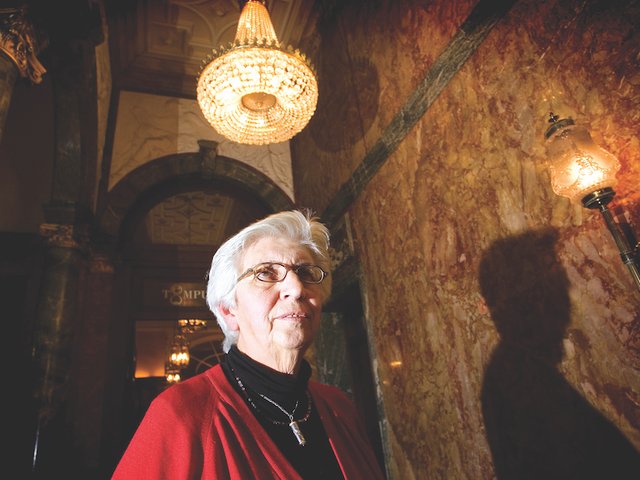The London-based, Palestinian Arabic newspaper, Al-Quds Al Arabi, has given details of the cultural pillage of Iraq during and after the Gulf War. Immediately after the war, the Department of Antiquities in Baghdad compiled a four-volume list of missing objects; many of these had been on long term loan from the Baghdad Museum to regional museums in Iraq. This list was sent to UNESCO last September and copies have recently been distributed by UNESCO to the Metropolitan Museum in New York, Sotheby’s in London, the International Foundation for Art Research, Interpol, and the International Council for Museums. Unfortunately the report is so lacking in detail as to be virtually useless in identifying individual objects, and there are no accompanying photographs. For the time being UNESCO is unable to send a cultural mission to Iraq to investigate the situation, although it has had a team of experts lined up since July of last year. Nor will it will get the green light until the United Nations is satisfied that Iraq has fulfilled all the conditions laid down in the Security Council resolutions during the hostilities.
Although it is over a year since the end of the Gulf War, the Iraqi Ministry of Culture and Information is still trying to recover various ancient treasures dating back to the prehistoric and Islamic periods which disappeared from museums in the north and the south of the country. Some of these items are believed to have been smuggled abroad.
Communiqués issued recently by the Department of Antiquities confirm that some of these historic items are still in Iraq in the hands of merchants who are trying to smuggle them out of the country for huge sums of money. The Director General of the Department, Muayyad Said, stated that the stolen works comprised more than 500 items representing the civilization of Mesopotamia from prehistoric to late Islamic times; more than 700 items representing the civilisation of northern Iraq; 4,500 books from the Library of the Iraqi Museum; and twenty-six crates of manuscripts from the Saddam Document Centre.
According to official Iraqi sources, the stolen items include terracotta figurines, earthenware vessels and jars, statues, flat and cylinder seals as well as metal articles with Arabic writing, gold and silver Islamic coins, and a number of clay tablets with cuneiform inscriptions dating from various periods in history. The term “antiquities” covers all buildings and objects from historical sites, including manuscripts. The stolen items include daggers, chairs, mirrors, various garments, domestic implements, and carpets.
The more than 4,000 items originally came from fourteen regional museums in Iraq and had been assembled in the seven main museums of Basra, Masan, Qadisiya and Kufa in the south of Iraq, and Kirkuk, Dahuk, and Suleymaniya in the north. According to officials of the Department of Antiquities, the theft and destruction of these items took place during the upheavals of last March caused by the Gulf War. This has led officials from the Department of Antiquities to offer rewards to anyone who helps them recover a lost item, as happened in Kirkuk where some people have already received between two and three thousand Dinars (less than £1) for turning items over to the Department.
Iraq has accused American soldiers of stealing important antiquities while they were on Iraqi territory during the war, and the Iraqi representative at the United Nations raised this issue after the ceasefire of last April. Iraq also lodged a formal complaint with UNESCO during the twenty-sixth session, convened at the end of last year, where it was represented by the Minister of Culture, Hikmet El-Bazaz.
The Iraqi complaint included full details about almost all the items stolen from its museums in the hope that this would prevent them falling into private hands or being auctioned, but according to the Director of the Iraqi Museum, Sabah Jasim, this effort met with failure. Sabah Jasim added that Iraq requested UNESCO to send a mission to investigate this matter, but agreement was not forthcoming “due to the obstructionism of America and Britain”.
Muayyad Said also accused American forces camped outside the city of Nasiriya in the south of Iraq of stealing antiquities from the locality of Tel El-lahm, saying that “while the American forces were digging in, the soldiers used their bayonets to dig up various artifacts from the site.” He stated that the American forces caused extensive damage to the site of Ur, with its stepped ziggurat suffering more than 400 shell hits. The ziggurat of Ur was originally built so that their god could step down from heaven into a room at the top of the structure, according to ancient mythology. Experts say that the antiquities at Ur and Tel El-lahm date back to the Sumerian period.
Muayyad Said also drew attention to the fact that the items stolen from the museum in the district of Dhu Qar include a copy of the obelisk of Hammurabi, a statue of Venus and a chariot of Assurbanipal as well as “jewellery, valuable objects, and clay tablets from various periods”.
He added that the temple of Nabushakkari at Babylon had been partially destroyed, along with the temple of Assurnasirpal II at Nimrod near Mosul, the fort of Akhissar in the desert at Karbala, the Kawaz mosque in Basra, the Mar Mata monastery and the Tahira church in Mosul.
He said that the official in charge of antiquities at the Nasiriya Museum had received from the Americans a “very small number” of terracotta objects dating back to the dawn of mankind and the Babylonian period, some of which had only recently been broken. The hand-over of those objects only took place after Iraq had lodged a complaint with the United Nations. The official claimed that UNESCO’s refusal to allow a mission was linked with schemes to transport those items out of Iraq.
Published in Al-Quds Al Arabi, London, 13 March 1992
Originally appeared in The Art Newspaper as 'Non-compliance with Security Council’s resolutions holds up UNESCO mission'


